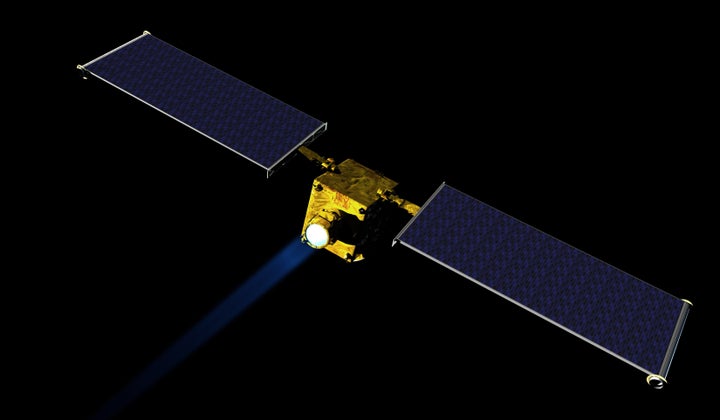NASA has taken the next step in its bold mission to protect the planet from potentially lethal asteroids.
Known as the Double Asteroid Redirection Test (DART), the mission involves firing a fridge-sized projectile at nine times the speed of a bullet at an incoming asteroid.

The hope is that the sheer force of the projectile when it collides with the asteroid will be enough to push it off course and steer it away from a potential collision with Earth.
Before you all start putting bags on your heads it’s important to note that there’s absolutely nothing to worry about, DART is nothing more than a test to prove that the system can work if called upon.
As such the team have targeted a non-lethal asteroid pair called Didymos that has two known near-Earth approaches in October 2022, and then again in 2024.
Travelling from Earth the spacecraft would use an advanced targeting system to fly to Didymos whereupon it would take aim at Didymos B, the smaller of the two asteroids.
Accelerating at a speed of 3.7 miles per second (or nine times the speed of a bullet), the refrigerator-sized object will then smash into Didymos B.
Thanks to its close proximity to Earth, NASA’s scientists will be able to use Earth-based observatories to then monitor the impact and the resulting change in orbit.
“DART is a critical step in demonstrating we can protect our planet from a future asteroid impact,” said Andy Cheng of The Johns Hopkins Applied Physics Laboratory in Laurel, Maryland, the DART investigation co-lead.
“Since we don’t know that much about their internal structure or composition, we need to perform this experiment on a real asteroid. With DART, we can show how to protect Earth from an asteroid strike with a kinetic impactor by knocking the hazardous object into a different flight path that would not threaten the planet.”
Didymos is in many ways the perfect system to experiment on. By targeting the smaller of the two they can guarantee a change in orbit and yet still not affect the much much larger Didymos A’s orbit around the Sun.
Lindley Johnson, planetary defense officer at NASA Headquarters in Washington, said: “This approval step advances the project toward an historic test with a non-threatening small asteroid.”
While small asteroids hit Earth almost daily, almost all of them are burnt up in the planet’s atmosphere.
Objects larger than 0.6 miles however are far rarer and due to their potentially cataclysmic affect on the planet, are a significant priority for NASA.

